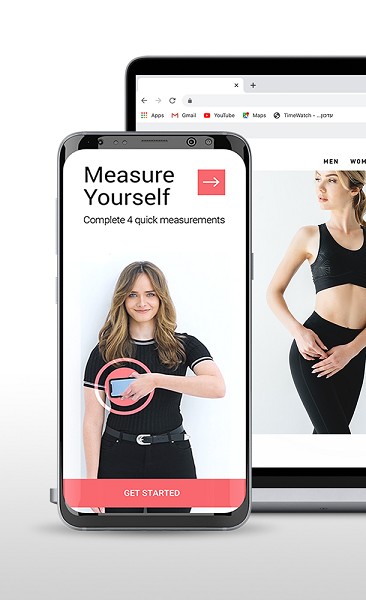Amidst rising returns, sizing solutions have become a perfect fit for retailers
Ecommerce sales are now forecast to break the $1 trillion mark in 2022 in the US alone, a milestone that wasn’t predicted to occur until 2024. That major shift brought on by the pandemic, paired with the fact that holiday sales grew 14.1% to hit a record $887 billion represents a major opportunity despite the current [and probably short-lived] Omicron setback.
Yet many retailers have failed to capitalize on the shift and even lost ground as they needed to compete with dominant players such as Amazon by outsourcing fulfillment and paying record amounts for returns. To level the playing field and position themselves for growing market share, retailers need to start by rethinking returns and recognizing that reverse logistics alone won’t solve the issue.
The return rate for brick and mortar bought items stands at 9%, while for eCommerce purchases the figure balloons to 20%. In a low-margin competitive industry, especially one where many outsource fulfillment, the accelerated shift to e-commerce is revenue draining at best and a doomsday scenario at worst. Almost every CEO, retail executive, or supply chain manager recognizes the issue, but they’re almost always focused on improving reverse logistics, or in some rare cases, allowing customers to keep the item.
Traditional approaches can absolutely lead to return improvements, but they’re not even close to the best option. That’s because approximately 70% of returns are due to poor fit, with the percentage reaching even higher in hard-to-fit categories such as underwear. The best way to bring down that percentage is to take a proactive approach that can decrease returns dramatically and provide buyers with confidence by focusing on fit.
Bracketing, or the selection of multiple sizes with the intent to return at least some of the order, is one of the most harmful and avoidable aspects of the size issue. Solutions such as our own, which utilizes the sensors already built into customers’ phones, to gain accurate measurements which are then matched to the exact specifications of a retailers’ inventory takes care of both bracketing and the vanity sizing that exacerbates it. When consumers experience a sizing solution the confidence gained translates directly to fewer returns. In markets where Levi’s implemented our technology they’ve seen a 40% decrease and other retailers have had similar results.
Focusing on sizing isn’t just about what retailers avoid, it’s also about what they are able to gain. First and foremost, average order sizes increase universally because of the ease of use of online shopping combined with the confidence that’s typically only felt in-store. The sizing approach also delights customers whereas implementing reverse logistics alone minimizes their inconvenience. Having a badly fitting item hauled away fast is not the same as ease of use for the whole family and an easy interactive experience with near-immediate dividends for the consumer.
Although it may seem like a far-off possibility, in-store shopping will eventually return and focusing on sizing during the rapid rise of eCommerce and returns can also yield wider innovation. The same sizing convenience that retailers can implement online will leave customers accustomed to an experience they’ll want to recreate in-store. When you can easily get your size and checkout, no one will want to wait in line for dressing rooms and spend even more time as staff search for other colors and sizes. Smart mirrors solve the issue while providing an efficient interactive experience that will create an omnichannel experience that benefits retailers and shoppers alike.
The issue of returns will persist into 2022 and beyond, leaving retailers that fail to adapt either bankrupt or failing. Yet solving the issue represents a significant opportunity to retailers to not only save money and increase revenues, but to connect with customers better than their competitors. Just as fast delivery was a differentiator in past years, quickly addressing returns and restoring customers’ confidence when buying online will be a defining trend for years to come.



